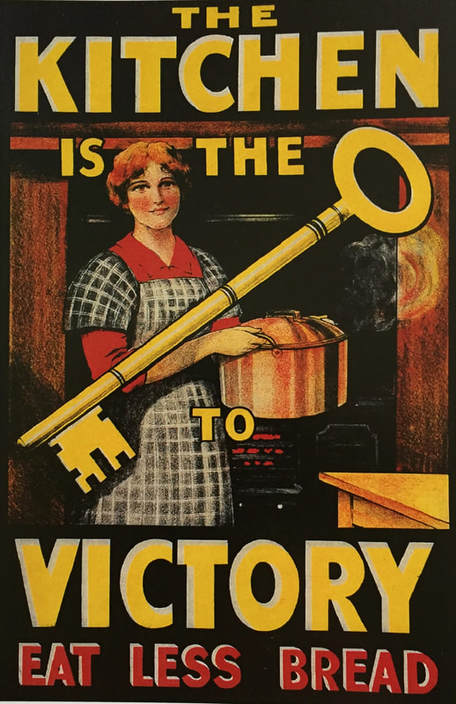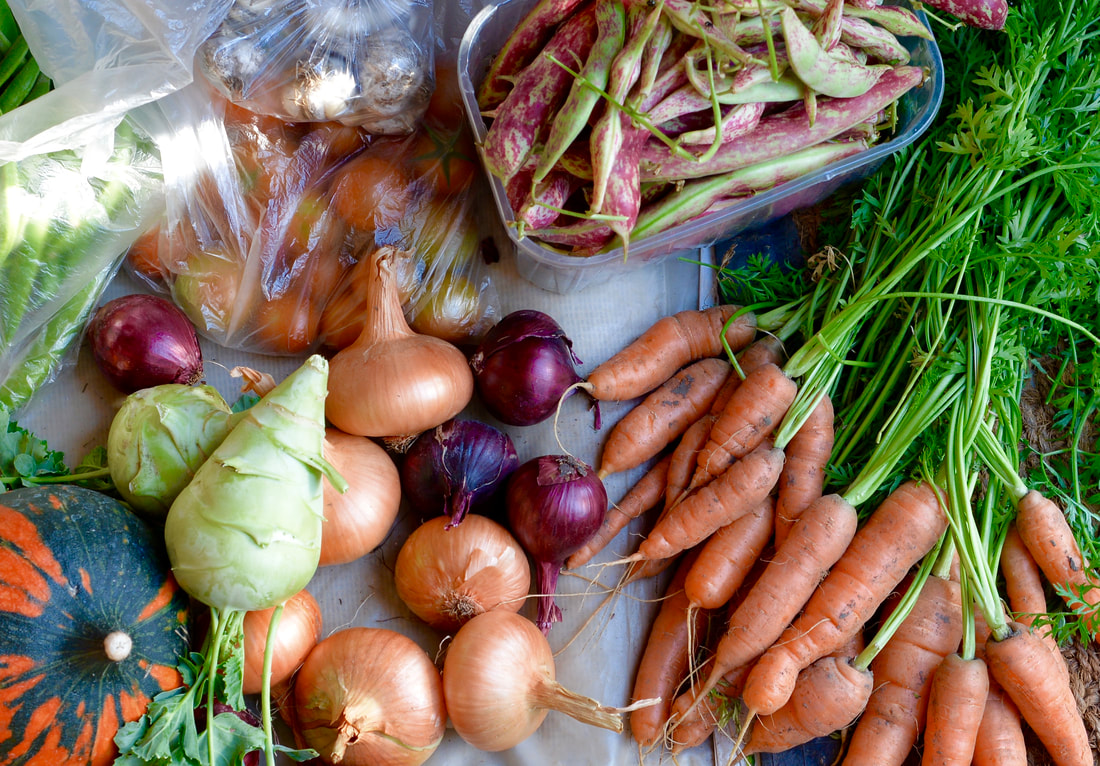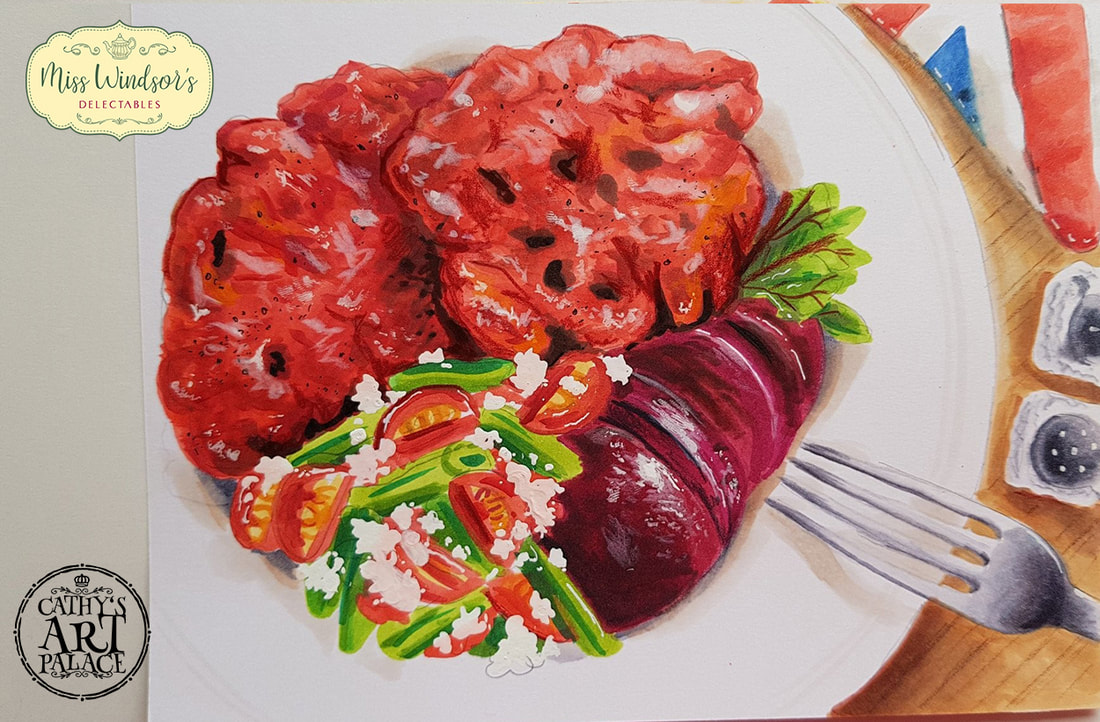|
Hello, darlings! I say, troops! – stand to attention, grab your spade, grow your own fruit and vegetables, Dig for Victory, and Eat for Victory – By Jove! chaps, now that’s the wartime spirit. Miss Windsor’s back again with yet another seasonal, allotment inspired, palate-pleasing culinary treat, based on a rather spiffing wartime recipe from my Eating for Victory cookery book. So please give a warm welcome to something a trifle different, frightfully British, and exceedingly healthful – Miss Windsor’s Beetroot & Green Bean Fritters! You see, my recipe is a fabulous fusion of 1940s wartime cuisine, my dear Winnie’s allotment grown beetroot and French beans (of course, one may use shop-bought) and today’s commonly known ingredient of gluten-free flour – anything to satisfy the health-conscious community. In fact, to achieve such culinary excellence I dabbled with both wheat flour and the gluten-free type, yet extraordinarily the latter produced a far tastier dish; thus created a rather pleasant gritty texture. Darlings, my beloved grandmother Josie once told me that during World War II the British public was far healthier than in this day and age, "Would you Adam and Eve it!" I hear you shriek with a slight tone of dismay! This was due to many factors, as near the end of the First World War the government finally took heed of the food issues that arose during such time, therefore, scientific research was carried out into all areas of food and nutrition. Also, during the great depression in the 1920s unemployment had soared to more than two million, plus a staggering number of people were near destitute and sadly couldn’t afford to buy nutritious foods such as milk, fruit, and vegetables. And quite shockingly, around forty million folks suffered from some kind of deficiency, most commonly calcium, which thankfully prompted the government to provide milk in schools. Of course, one wasn’t too shocked to learn that a study conducted by the British Medical Association in the 1930s, revealed that the more affluent areas of society during that period benefited from an abundance of basic dietary constituents. As you know war broke out again in 1939, “Miss Windsor, but what the heck did the government do to ensure every member of society was well fed and watered?” you pipe up from across the airwaves! Well, my dears, firstly let’s pay homage to Sir Jack Drummond – nutritional biochemist and scientific adviser to the Ministry of Food, who chummed up with Lord Woolton – who also happened to be the wartime Minister of Food (glorious food!). You see, their shared passion to improve the nation’s diet and to eradicate malnutrition, eventually led to a national food policy. Thus, measures were put in place to feed the British public back to good health. PHOTO CREDIT - CLICK HERE And without going into every last detail, in the year of 1940, every man, woman, and the child was issued with a ration book for butter, bacon, and sugar. Soon followed by meat, preserves, tea, margarine, cooking fats, milk, and so on – so whether you were rich or poor, all members of society received adequate nutrition to survive the war. You’ll be pleased to hear that the Advice Division of the Ministry of Food provided excellent counsel to the British public throughout the war, which included the healthiest ways to remain fighting fit and how to best use their food rations. In fact, one thing we’re all familiar with is the government’s Dig for Victory campaign – such an ingenious idea, don’t ya think! So, whether you were a city dweller or a country bumpkin everyone was encouraged to grab a spade and dig up their flower beds, window boxes, backyards, tennis courts, you name it and dig their way to victory and good health with homegrown fruit and vegetables. Moving swiftly on, if you’re following my wartime culinary journey then you would've read about my visit to Whimsical Winnie’s allotment at Fulham Palace Meadows, London. If so, then one presumes you’ve learnt a fact or two about the meadows fascinating "green-fingered" connection with the war effort - if not, then slap on the wrist! Therefore, before one proceeds any further please do pop over and meet my dear friend Winnie – The Queen of Fulham Palace Meadows, and I’ll see you back here in a jiffy. Here's the LINK: WHIMSICAL WINNIE THE QUEEN OF FULHAM PALACE MEADOWS ALLOTMENTS! Welcome back darlings! Unfortunately, it has come to Miss Windsor's attention that many of you succumbed to the common ailment of "idle eyes", so just this once one will indulge you with a few titbits about one's recipe and the meadows. You see, many months before Miss Windsor toddled off to Winnie’s allotment, one was bestowed a delightful cookery book from the good lady of Fortune PR (www.fortunepr.co.uk) called Eating for Victory (Healthy Home Front Cooking on War Rations) – aren’t I a lucky girl! Then following my visit to Winnie’s precious allotment, I was delighted to learn that in 1916 there was a generous old chap known as Bishop Winnington-Ingram who granted the land or meadows to the good folk of Fulham, London, as part of an early WWI Dig for Victory campaign. I say, this news excited me greatly as it fits in perfectly with my theme of food history; in particular wartime recipes. PHOTO CREDIT - CLICK HERE Darlings, Miss Windsor is feeling awfully parched now, so must pop off for a well-deserved cup of tea! But before I go, may I rouse your spirits with a few trill notes from the "Forces' Sweetheart" Dame Vera Lynn, “We’ll meet again, don’t know where don’t know when. But I know we’ll meet again some sunny day!” I say, what a rather romantic and merry ending to our time together, but I’m sure “we’ll meet again some sunny day………!" Darlings, a round of applause to the delightfully talented Cathy (Twitter: @CathysArtPalace) for her incredible illustration of Miss Windsor's photo - as above.
Miss Windsor’s Wartime Recipe:
|
Search for recipes
Archives
June 2020
Categories
All
|

















